Discover Epicenter - Learn about Crypto, Blockchain, Ethereum, Bitcoin and Distributed Technologies
Epicenter - Learn about Crypto, Blockchain, Ethereum, Bitcoin and Distributed Technologies

Epicenter - Learn about Crypto, Blockchain, Ethereum, Bitcoin and Distributed Technologies
Author: Epicenter Media Ltd.
Subscribed: 22,894Played: 155,686Subscribe
Share
© Epicenter Media Ltd.
Description
Epicenter brings you in-depth conversations about the technical, economic and social implications of cryptocurrencies and blockchain technologies. Every week, we interview business leaders, engineers academics and entrepreneurs, and bring you a diverse spectrum of opinions and points of view.
Epicenter is hosted by Sebastien Couture, Brian Fabian Crain, Friederike Ernst, Meher Roy and Felix Lutsch. Since 2014, our episodes have been downloaded over 8 million times.
Epicenter is hosted by Sebastien Couture, Brian Fabian Crain, Friederike Ernst, Meher Roy and Felix Lutsch. Since 2014, our episodes have been downloaded over 8 million times.
658 Episodes
Reverse
Fresh off the launch of the Ignition Chain and a successful community-led $61M token sale, Aztec Network co-founder Zac Williamson joins Friederike Ernst to unpack the "existential" journey of building programmable privacy. Zac opens up about the "sacrificial altar" moment where the team decided to kill their live product, Aztec Connect which had 60k users because they realized true decentralized privacy required rebuilding from scratch rather than iterative upgrades.They dive deep into the architecture of the new network, which utilizes a hybrid state model (encrypted UTXOs for privacy, public accounts for transparency) to enable composable applications. Zac challenges the cryptographic dogma of "don't roll your own crypto," arguing that for pioneers, relying on "battle-tested" libraries is impossible. He explains why decentralized sequencers are not just a moral choice but a security necessity to prevent government-mandated backdoors. Finally, Zac contrasts the chaotic but decentralized resistance to surveillance in the US with the increasing top-down control in the UK and Europe, framing Aztec as essential "defense in depth" for the digital age.Topics00:00 Intro 03:45 The "Sacrificial Altar": Killing Aztec Connect10:15 Hybrid Architecture: UTXOs vs. Accounts16:30 Why You Must "Roll Your Own Crypto"22:00 Decentralization as a Defense Against Backdoors28:15 Performance: Throughput & Latency Trade-offs34:40 Private Smart Contracts: Gaming & Identity41:00 The Macro View: US vs. EU SurveillanceLinksGnosis: https://gnosis.io/Zac Williamson on X: https://twitter.com/Zac_AztecAztec Network: https://aztec.networkNoir Language: https://noir-lang.orgSponsors: Gnosis: Gnosis has been building core decentralized infrastructure for the Ethereum ecosystem since 2015. With the launch of Gnosis Pay last year, we introduced the world's first Decentralized Payment Network. Start leveraging its power today at http://gnosis.io
Ethereum co-founder Joe Lubin joins Friederike Ernst to discuss why we are at the "end of a supercycle," a chaotic transition period where legacy institutions are finally adopting blockchain rails not just for efficiency, but for survival. They explore the "inevitable convergence" where the US government may actively rely on stablecoins to absorb debt, effectively using crypto to extend the lifespan of the dollar. At the same time, banks scramble to compete with self-custodial wallets. Joe also details the structural evolution of Consensys, from an "organic blob" incubating projects like Gnosis to a focused software powerhouse. He differentiates Linea from competitors by highlighting its commitment to permissionless innovation where anyone can deploy a rollup without a "sign-off". He shares his vision for MetaMask evolving into a user-owned "full-service bank. Topics00:00 Intro & Paradigm Shift04:15 Crypto-Anarchy vs. Enterprise10:30 Banks & Stablecoins16:00 The Economic Supercycle24:45 Consensys History & Spin-outs33:20 Linea & Decentralization42:15 L1 Scaling & ZK48:00 Permissionless Rollups55:30 Future OptimismLinksJoe Lubin on X: https://twitter.com/ethereumJosephConsensys: https://consensys.ioLinea: https://linea.buildMetaMask: https://metamask.ioGnosis: https://gnosis.io/ Sponsors: Gnosis: Gnosis has been building core decentralized infrastructure for the Ethereum ecosystem since 2015. With the launch of Gnosis Pay last year, we introduced the world's first Decentralized Payment Network. Start leveraging its power today at http://gnosis.io
Quantum computing is often dismissed as a distant sci-fi future, but Ethereum OG John Lilic and Oxford physicist Stefano Gogioso argue the timeline is shrinking fast with roadmaps converging around 2030. In this episode, they break down the "woeful" state of quantum readiness in crypto, explaining how Shor's algorithm could eventually shatter the elliptic curve cryptography protecting Bitcoin and Ethereum.They also explore the terrifying concept of "harvest now, decrypt later," which implies that encrypted data and privacy coins like Monero may essentially be compromised already. Finally, they introduce "Quantum Money," a revolutionary form of digital cash developed by Stefano’s startup NeverLocal, which relies on the laws of physics rather than blockchain consensus to prevent double-spending.Topics00:00 Intro03:00 John’s Quantum Awakening08:00 Defining Quantum Computing13:30 Logical Qubits Explained18:15 Crypto’s "Woeful" Readiness23:30 "Harvest Now" Threat28:45 Monero’s Privacy Risk33:15 What is Quantum Money?40:00 Investment & HedgingLinksJohn Lilic on X: https://x.com/LilicJohnStefano Gogioso on X: https://x.com/StefanoGogiosoNeverLocal: https://neverlocal.com Quantum.info: https://quantum.infoGnosis: https://gnosis.io/Sponsors: Gnosis: Gnosis has been building core decentralized infrastructure for the Ethereum ecosystem since 2015. With the launch of Gnosis Pay last year, we introduced the world's first Decentralized Payment Network. Start leveraging its power today at http://gnosis.io
“DevConnect 2025 was about touching and feeling Ethereum IRL”Nathan Sexer, lead of the DevConnect 2025 and Events team at the Ethereum Foundation, gives a peek into the largest iteration of Devconnect ever, with 20,000 attendees, and why the team pivoted to a "World's Fair" format, creating tangible districts for DeFi and Privacy to let attendees truly "touch and feel" the ecosystem.The conversation gets real about the friction of the physical world. He explained why Argentina’s crypto-native culture makes it the perfect host, how hyperinflation fueled bottom-up adoption, and even the venue-wide internet failure became an accidental "feature," breaking the on-screen silos and pushing genuine face-to-face connections.A massive geopolitical win was how the team worked with the government to issue 1,000+ visas for attendees from over 130 nationalities to make this event in the true spirit of borderless crypto.The Ethereum Foundation is heading to Mumbai in 2026! The goal for India is to unify a fragmented developer diaspora and bring regulatory attention to one of the world's most critical tech hubs.Topics00:00 Intro & Scale04:15 World's Fair Concept09:50 Why Argentina?14:30 Operational Challenges18:15 Internet Blackout22:00 Booth Renaissance28:30 Privacy Priority33:00 Devcon Mumbai37:40 Indian DevelopersLinksDevcon Twitter/X: https://twitter.com/EFDevconNathan Sexer on X: https://x.com/nethan_ethEthereum Foundation: https://ethereum.orgGnosis: https://gnosis.io/Sponsors: Gnosis: Gnosis has been building core decentralized infrastructure for the Ethereum ecosystem since 2015. With the launch of Gnosis Pay last year, we introduced the world's first Decentralized Payment Network. Start leveraging its power today at http://gnosis.io
At DevConnect 2025, Sebastian and Friederike speak with Peter Van Valkenburgh about the rapidly evolving battle for digital rights. Peter challenges the industry's comfort with transparency, arguing that "transparency will destroy neutrality." He uses the history of SWIFT to illustrate how a once-neutral messaging system was captured by geopolitical interests because it wasn't "technically blind" to the data it processed. He argues that for blockchains to survive as global settlement layers, they must be "actually blind" to transactions, making neutrality a technical reality rather than a policy choice.The conversation turns to the aggressive legal tactics currently deployed against developers. Peter highlights the Pereira Bueno case, where prosecutors charged MEV searchers with wire fraud for being "dishonest validators" a concept Peter argues completely undermines the game-theoretic security of permissionless networks. He also breaks down the mixed bag of Tornado Cash litigation. While the sanctions against the protocol were successfully challenged and invalidated for Americans, the criminal conviction of developer Roman Storm for "unlicensed money transmission" sets a terrifying precedent for anyone publishing open-source code.On a constructive note, Peter introduces Coin Center's "John Hancock Project," which advocates for replacing the current, ineffective KYC/AML regime (which seizes less than 1% of illicit funds) with a system based on privacy-preserving attestations and self-sovereign risk scores. Finally, Peter shares surprising optimism regarding the US Securities and Exchange Commission (SEC). He notes that under the influence of Commissioners Hester Peirce and Paul Atkins, the agency has shifted from an aggressive adversary to a potential ally, openly discussing the benefits of full asset tokenization and the constitutional necessity of financial privacy.Topics00:00 The Telegram vs. Signal security rant05:15 The "Transparency Paradox": Why transparent Layer 1s cannot remain neutral in the long run10:40 The SWIFT Analogy: How a neutral messaging layer became a politicized settlement enforcer15:50 The Pereira Bueno Case: Why labeling MEV strategies as "wire fraud" threatens all validators23:10 L2 Sequencing Risks: Centralization and the need for "dumb pipes" 28:30 The Failure of KYC: Why 99.8% of illicit funds are missed and the cost of mass surveillance35:00 The "John Hancock Project": Using ZK-proofs and attestations to replace identity surveillance42:15 Tornado Cash Update: Sanctions invalidated vs. the dangerous precedent of Roman Storm’s conviction49:00 The SEC's 180: Hester Peirce, Paul Atkins, and the push for tokenized equitiesLinks mentioned in the episode: Gnosis: https://gnosis.io/ Coin Center: https://www.coincenter.orgEpicenter - All Episodes: https://epicenter.tv/Report: Tear Down This Walled Garden: https://www.coincenter.org/tear-down-this-walled-garden/ Pereira Bueno Amicus Brief: https://www.coincenter.org/amicus-brief-mev-wire-fraud/ Peter on X: https://x.com/valkenburghSebastian on X: https://x.com/seb3point0Friederike on X: https://x.com/tw_tter Sponsors:Gnosis: Gnosis has been building core decentralized infrastructure for the Ethereum ecosystem since 2015. With the launch of Gnosis Pay last year, we introduced the world's first Decentralized Payment Network. Start leveraging its power today at http://gnosis.io
Captured live at Cosmoverse 2025, this episode brings host Sebastian in conversation with Michael (better known as Cryptocito, Cosmos investor via Cito Ventures) and Magnus (@0xMagmar, Co-CEO Cosmos Labs). Against a backdrop of institutional gravitas, central banks mingling alongside Revolut executives, the conversation traces Cosmos' arc across five Cosmoverses, from Medellín's raw developer fervor to the polished, enterprise-oriented event unfolding here. It's a marker of the ecosystem's maturation, one that demands Cosmos "grow up" to weave itself into the fabric of global finance, governance, and economies beyond its insular origins.Magnus lays out Cosmos Labs' forward path: Systematically acquiring and refining homegrown innovations, such as the EVM rebuild over six months into a core stack component and consolidating privacy primitives from projects like Secret Network and Penumbra into seamless, enterprise-grade tools. These advancements, long championed by Cosmos builders, now stand ready for institutional adoption. On quantum threats, enterprises show little concern for now, but the panel underscores blockchains' unique vulnerabilities: Unlike centralized systems, they require broad coordination for upgrades, where Bitcoin's inertia pales against Cosmos' app-chain flexibility, allowing isolated chain overhauls without dragging down the broader network, a resilience Ethereum lacks. Topics covered in this episode:0:00 Introduction & Cosmoverse Vibe Check2:30 Reflections on Five Cosmoverses6:45 Ecosystem Maturation: Grassroots to Institutional Focus11:20 Cosmos Labs' Roadmap: Unifying Privacy & EVM Innovations16:50 Building Cohesive Stack Features for Enterprises22:15 Privacy Tools: Secret Network, Penumbra, and Nym27:40 Quantum Computing Threats & Blockchain Vulnerabilities33:10 Coordination Challenges: Hard Forks vs. App-Chain Modularity38:25 Sovereign Day Argentina: CBDC & Gov Sovereignty Summit43:50 Leadership Adaptation & Community Inclusion49:20 Future Vision: Cosmos as Global Finance Enabler54:00 Closing Thoughts & Event ShoutoutsEpisode links: - Michael (@Cryptocito) (https://x.com/Cryptocito )- Magnus (@0xMagmar) (https://x.com/0xMagmar)- Gnosis (https://gnosis.io/)- Epicenter - All Episodes (https://epicenter.tv/)- Cosmoverse 2025 (https://cosmoverse.org/)Sponsors: - Gnosis: Gnosis has been building core decentralized infrastructure for the Ethereum ecosystem since 2015. With the launch of Gnosis Pay last year, we introduced the world's first Decentralized Payment Network. Start leveraging its power today at http://gnosis.io This episode is hosted by Sebastien Couture. Show notes and listening options: https://epicenter.tv/
Brian Fabian Crain and Michael Egorov, Curve Finance founder, discuss Curve's origins: solving inefficient DAI/USDC swaps after MakerDAO borrows by creating a DeFi AMM for stablecoins and LSTs. It hit 1M TVL with a bonding curve concentrating liquidity at 1:1, more effective for pegged assets than Uniswap. Features grew to include BTC wrappers, stETH pairs, and crvUSD (a CDP stablecoin with reversible liquidations & a peg-keeper). Governance uses veCRV: Locking CRV grants voting power proportional to lock duration, a mechanism now refined in Yield Basis. Yield Basis solves impermanent loss in volatile pools (e.g., BTC/crvUSD). Users deposit BTC; the protocol borrows crvUSD, pairs it at 2x leverage (50% debt/equity), and uses LP tokens as collateral. This gives 1:1 asset tracking, while fees accrue from auto-rebalancing arbitrage. Simulations show 20%+ APY (may decline as BTC volatility drops) under a $50B TVL cap. It complements Curve by directing veCRV incentives to crvUSD pools, enhancing liquidity, fees, and DAO revenues. Key considerations: manual migrations, deterring forks, and dev support to scale. Topics Discussed 00:00 Introduction to Curve Finance and YieldBases 02:24 Understanding Curve's Unique Mechanisms 07:58 The Concept of veTokenomics 15:27 Lessons Learned from Building Curve 22:20 Exploring YieldBasis and Its Innovations 29:47 Understanding Yield Basis and Collateralization 32:25 Navigating Market Volatility and Liquidation Events 35:32 Metrics and Performance Insights of Yield Basis 38:35 Scaling Yield Basis: Future Directions 40:33 Yield Expectations and Market Dynamics 43:12 Potential Growth and Liquidity Challenges 46:18 Expanding to Other Chains and Governance Tokens 49:35 The Symbiotic Relationship with Curve 54:31 Upcoming Milestones and Future Developments Links Mentioned Michael Egorov on X Curve Finance Yield Basis Gnosis Epicenter - All Episodes SponsorsGnosis: Building decentralized infrastructure since 2015. With Gnosis Pay, the first Decentralized Payment Network. Start leveraging its power at gnosis.io This episode is hosted by Brian Fabian Crain.
Sci-fi titan Neal Stephenson, whose Snow Crash coined the term 'metaverse' and Cryptonomicon, which foreshadowed crypto in 1999, joins Friederike to discuss his "hard sci-fi" method: building immersive, consistent worlds, not prophecy. He's now co-founder of Lamina1, aiming to restore Web1's ethos and give creators IP sovereignty with direct micropayments, breaking free from Web2's "walled gardens."Neal unpacks Web3's promise like "intent-casting" flipping ad models while citing its critical traps: abysmal UX, criminal stigma, and the "soul-crushing" risk of just upgrading incumbent systems.Spotlighting Lamina 1's game "Artifact," he argues Web3's true success will be measured when the technology becomes invisible and safe, proving its value by restoring sovereignty to its users and creators, rather than through speculative hype.Topics discussed in this episode:(00:00) Introduction to Decentralization and Blockchain(01:20) The Role of Storytelling in Technology Prediction(03:48) The Balance of Optimism and Pessimism in Fiction(06:27) Web3: Promises and Pitfalls(08:36) The Evolution of the Web: From Decentralization to Centralization(13:37) Metrics for a Decentralized Web(15:55) Lamina One: A New Vision for the Metaverse(23:44) Creating a Financial Layer for the Creator Economy(25:08) Legal Implications of Smart Contracts(27:38) The Strength of Smart Contracts(31:04) Decentralization vs. Centralization in the Creator Economy(36:21) The Decline of Centralized Platforms(41:23) Financialization and the Creative Economy(45:47) The Future of Web3 and User Experience(51:17) Potential Failure Modes of Web3Links mentioned in this episode: Neal Stephenson, Co-founder Lamina1: https://x.com/nealstephenson Lamina 1: https://lamina1.com/home Sponsors: Gnosis: Gnosis has been building core decentralized infrastructure for the Ethereum ecosystem since 2015. With the launch of Gnosis Pay last year, we introduced the world's first Decentralized Payment Network. Start leveraging its power today at gnosis.io This episode is hosted by Friederike Ernst.
As blockchain tech gets co-opted by legacy players for efficiency gains, has the revolution lost its edge? Crypto philosopher Paul Dylan-Ennis and Jito's Head of Governance, Dr. Nick Almond, join Friederike to probe this shift from 2017's visionary DAOs to today's Telegram-negotiated votes and whale capture. Rooted in philosophy and complex systems, they unpack mind-hacking risks via data micro-targeting, the polycentric bulwarks (full nodes, prediction markets) shielding against cultural flips, and why epistemic tools could fortify crypto against real-world censorship. Their call: Reclaim the ethos through event evangelism and normie outreach for grassroots empowerment.Topics discussed in this episode:0:00 - Introduction1:32 - Nick's journey: Physics to DAOs3:59 - Paul's path: Philosophy to crypto counterculture5:54 - Crypto's shift from niche to incumbent tool7:37 - Governance as crypto's "soul"10:54 - Early DAOs vs. today's backroom reality11:45 - Diluted ideas & human workarounds1:03:44 - Elevating better leaders & social consensus tools1:05:05 - Hacking minds: Post-ideological vs. cypherpunk1:07:21 - Polycentric defenses & full node bedrock1:10:50 - Advice: Evangelize at events & outreach to normiesLinks mentioned in this episode:Dr. Nick Almond, Head of Governance at JitoPaul Dylan-Ennis, Crypto PhilosopherSponsors: - Gnosis: Gnosis builds decentralized infrastructure for the Ethereum ecosystem since 2015. This year marks the launch of Gnosis Pay— the world's first Decentralized Payment Network. Get started today at gnosis.io This episode is hosted by Friederike Ernst.
Brave has spent a decade building a privacy-first browser that empowers users with tools like ad-blocking and fingerprinting protection, now serving 100 million monthly active users. Security engineer Kyle Den Hartog joins Friederike to unpack the centralization traps in digital identity from email's spam-driven dominance to one-size-fits-all DeFi lending rates and how Brave counters them with BAT's user-rewarding ad model, zero-knowledge personalization, and wallets that act as privacy guardians. Kyle warns of on-chain transparency's risks to consumer behavior, advocates for intent-based "vendor relationship management" advertising, and draws historical lessons on censorship's chilling effects amid rising regulations like EU chat controls. He shares Brave's vision for seamless private payments and user-controlled algorithms to reclaim the open web from Big Tech monopolies.Topics discussed in this episode:IntroductionKyle's background in security and identityWhy identity and privacy matterThe history and centralization of digital identityEmail as a cautionary tale for decentralizationBrave's privacy-first vision and 100M usersBAT: Rewarding users for attentionChallenges and evolutions in Brave's ad modelZero-knowledge for intent-based adsBrave Wallet: Privacy by defaultOn-chain privacy pitfalls and wallet solutionsBrowser wallets vs. built-in securityCensorship, regulations, and history's lessonsFixing social media algorithmsBrave's 5-year visionLinks mentioned in the episode: Kyle Den Hartog, Security Engineer at Brave: https://x.com/PryvitKyleBrave Browser: https://brave.com/Sponsors:Gnosis: Gnosis builds decentralized infrastructure for the Ethereum ecosystem, since 2015. This year marks the launch of Gnosis Pay— the world's first Decentralized Payment Network. Get started today at gnosis.io This episode is hosted by Friederike Ernst.
In this episode, Sebastien is joined by Jelena Djuric, co-founder of Noble, a generic asset issuance chain built for the Cosmos ecosystem. Jelena shares her journey into crypto, which began with an interest in political science, leading her to discover Bitcoin's potential. She describes the origins of Noble, created to solve a critical need within Cosmos: a native, fungible source of liquidity like USDC.Before Noble, assets were often bridged in fragmented ways, creating poor user experiences. Noble was designed as a simple, secure, and neutral "asset issuance hub," a purpose-built chain for natively issuing assets and distributing them throughout the Cosmos network via IBC.Jelena emphasizes that Noble is intentionally "boring," with a minimal feature set to reduce the attack surface. It operates with a proof-of-authority consensus model to meet the compliance needs of asset issuers like Circle. Jelena also discusses the importance of CCTP for moving USDC between Cosmos and other ecosystems, with Noble as the routing hub. Looking ahead, Jelena sees a future where Noble supports a diverse range of assets beyond stablecoins, including RWAs.Topics discussed in this episode: Introduction Jelena's background and entry into crypto Why fragmented liquidity is holding crypto back Noble's vision for unifying liquidity Why a "boring" chain is a more secure chain Noble's proof-of-authority model for issuer trust Bringing a single source of truth for USDC to the Interchain Using CCTP to connect liquidity across ecosystems Noble's business model The future of solving liquidity for RWAsLinks mentioned in this episode: Jelena Djuric, Co-Founder, Noble: https://x.com/jelena_noble Noble: https://x.com/noble_xyz Sponsors: Gnosis: Gnosis builds decentralized infrastructure for the Ethereum ecosystem, since 2015. This year marks the launch of Gnosis Pay— the world's first Decentralized Payment Network. Get started today at gnosis.io This episode is hosted by Sebastien Couture.
In this episode, Sebastien Couture is joined by Benjamin, the founder of CAP, a stablecoin protocol designed to provide insured yield. The protocol features two main products: CUSD, a digital dollar, and stCUSD, its staked, yield-bearing version. Yield is generated through an "allocation engine" where third-party operators borrow from the protocol's reserve to execute yield strategies. To ensure user deposits, these operators must be vouched for by restakers on protocols like Symbiotic. If an operator defaults, the restakers who vouched for them are slashed, protecting the stablecoin holders' funds. This model shifts risk from the end-user to the restakers, who have a bilateral relationship with the operators they underwrite, often backed by legal agreements.Topics covered in this episode:Benjamin's background and perspective on ChinaJourney into crypto and stablecoinsHot Take: Stablecoins are not as safe as you thinkThe evolution of stablecoin modelsHas DeFi forgotten about decentralization?CAP's design: CUSD and stCUSDHow CAP generates yield with operators and restakersThe role of restakers and legal agreementsIntegrating with Symbiotic and views on EigenLayerThe best use cases for shared securityNavigating the Genius Act and global regulationsRebuilding trust in the DeFi ecosystemWhy the stablecoin space is not too crowdedEpisode links:Benjamin on XCap MoneySponsors:Gnosis: Gnosis builds decentralized infrastructure for the Ethereum ecosystem, since 2015. This year marks the launch of Gnosis Pay— the world's first Decentralized Payment Network. Get started today at - gnosis.ioThis episode is hosted by Sebastien Couture. Show notes and listening options: epicenter.tv/618
TradFi FX markets are slow, expensive and often lack liquidity for direct swaps between different world currencies, having to route through USD pairs. While crypto could technically solve pairing through AMM pools, those needed to be arbitraged in order to reflect TradFi rates. With 15 fully-backed stablecoins, Mento is building the largest FX infrastructure, bringing world currencies onchain through its robust multi-currency stablecoin platform. In order to provide traders with accurate real-word FX rates, Mento employs FPMM (fixed-price market makers) which gather offchain data from multiple oracles. Instant settlement, cross-border, at a fraction of a cost of conventional remittance providers, while also avoiding traditional banking limitations.Backed by strong on- & off-ramp integrations, Mento also caters towards day-to-day use cases, empowering locals and businesses to diversify their FX exposure without the hurdles of TradFi. Mento enables smooth cross-currency transactions without traditional banking limitations, unlocking DeFi yield for a wide variety of currencies.Topics covered in this episode:Markus’ background, from TradFi to DeFiUnbanking the bankedStarting a stablecoin protocol on CeloThe role of stablecoinsFX markets & Mento’s designFPMM vs. AMMMento’s target audienceCentralised vs. decentralised stablecoinsMento governanceM0’s approachIntegrating with banking systemsEpisode links:Markus Franke on XMento on XCelo on XSponsors:Gnosis: Gnosis builds decentralized infrastructure for the Ethereum ecosystem, since 2015. This year marks the launch of Gnosis Pay— the world's first Decentralized Payment Network. Get started today at - gnosis.ioThis episode is hosted by Friederike Ernst.
Without a doubt, the introduction of stablecoins has vastly increased overall crypto liquidity, adoption and real-world use cases as they offered a safe haven against the industry’s volatility, especially during bearmarkets. However, despite being extremely efficient, the main stablecoin actors (i.e. Circle & Tether) are centralised entities. Many attempts have been made to create a reliable decentralised stablecoin, but regulations and the resounding collapse of Terra’s UST have only pushed towards more established, yet centralised, variants.f(x) is a new generation CDP (collateralised debt position) protocol that offers on-chain perpetual trading for BTC & ETH with near-0 funding rates and a novel liquidation mechanism which protects users against hard liquidations. The leverage component is powered by emitting fxUSD, the protocol’s decentralised stablecoin, which boasts robust peg-keeping mechanisms, the main one being fxSAVE’s stability pool. The fxSAVE strategy bestows nearly 10% APY to the yield-bearing fxUSD-USDC pair.Topics covered in this episode:Cyrille’s backgroundAladdinDAODecentralised stablecoinsf(x) perps and sharing liquidation risksThe efficiency of progressive liquidationsRemoving funding ratesfxSAVE’s stability pool yieldsfxUSD’s organic adoptionThe importance of decentralised stablecoinsWinning in the perp arenaOpportunities in the stablecoin adoption raceEpisode links:Cyrille Brière on Xf(x) Protocol on XAladdinDAO on XSponsors:Gnosis: Gnosis builds decentralized infrastructure for the Ethereum ecosystem, since 2015. This year marks the launch of Gnosis Pay— the world's first Decentralized Payment Network. Get started today at - gnosis.ioThis episode is hosted by Sebastien Couture.
Euler is a DeFi lending protocol built around the idea of permissionless modularity, enabling users to lend and borrow almost any crypto asset with flexible, permissionless pools, tailored to individual risk profiles. Moreover, Euler Vault Kit (EVK) and Ethereum Vault Connector (EVC) enable the creation of custom lending vaults which, in turn, can be used as collateral for other vaults. Earlier this year Euler also announced EulerSwap, a new DEX with a built-in AMM powered by Euler’s lending infrastructure and integrated with Uniswap v4’s hook architecture. EulerSwap integrates directly with Euler’s lending vaults, allowing assets to be used across multiple pools. This turns the lending protocol into a shared liquidity layer, improving capital efficiency across the ecosystem via swaps, lending yield or collateral for borrowing other assets.Topics covered in this episode:Michael’s backgroundThe history & vision behind EulerThe Euler hackEuler V2Euler vs. other lending protocolsDiversifying offeringsVariable vs. fixed ratesHow Pendle worksEuler’s futureRWAsPrivacy in DeFiEuler roadmapThe impact of AI in DeFiEpisode links:Michael Bentley on XEuler on XSponsors:Gnosis: Gnosis builds decentralized infrastructure for the Ethereum ecosystem, since 2015. This year marks the launch of Gnosis Pay— the world's first Decentralized Payment Network. Get started today at - gnosis.ioChorus One: one of the largest node operators worldwide, trusted by 175,000+ accounts across more than 60 networks, Chorus One combines institutional-grade security with the highest yields at - chorus.oneThis episode is hosted by Brian Fabian Crain.
Blockchains operate as a public ledger, ‘disclosing’ the entire transaction history and associated data to everyone. While verifiability and traceability are key traits, as blockchains gain global adoption, those very features hinder the process. Self custody, on-chain identities, corporate strategies, transaction history, private deals, all represent highly sensitive information that call for provable confidentiality. Fully homomorphic encryption has long been considered the ‘holy grail’ of cryptography as it enables computation to be performed on encrypted data without the need of prior decryption. This basically translates to true end-to-end encryption, both on-chain and off-chain. As cryptographic research advances, so does the scalability and applicability of FHE. As a result of more than 5 years of work, Zama has now released Zama Protocol, which enables confidential smart contracts on top of any L1 or L2 using FHE, without any additional execution burden. By encrypting all ciphertexts with the same public key, FHE ensures composability and seamless integration across different blockchains and applications, making it a true cross-chain confidentiality layer. Through parallel execution, Zama Protocol already surpasses Ethereum’s throughput, yet future roadmap includes open-source development of FPGA & ASIC in order to scale it even further, to accommodate faster, non-EVM chains.Topics covered in this episode:Zama’s progress in FHEZama's confidential blockchain ProtocolSecurity guarantees of MPC coprocessorsMaintaining a healthy operator setSlashing and governanceZama’s throughputOpen-sourcing FPGA & ASIC developmentThe Zama token & its implicationsZama’s public testnetPrivate votingZama fundingRegulationsExpanding use cases beyond blockchainsFuture goals and expectationsEpisode links:Rand Hindi on XZama on XSponsors:Gnosis: Gnosis builds decentralized infrastructure for the Ethereum ecosystem, since 2015. This year marks the launch of Gnosis Pay— the world's first Decentralized Payment Network. Get started today at - gnosis.ioChorus One: one of the largest node operators worldwide, trusted by 175,000+ accounts across more than 60 networks, Chorus One combines institutional-grade security with the highest yields at - chorus.oneThis episode is hosted by Friederike Ernst.
Built primarily for institutional-grade clients, Pareto delivers customizable on-chain credit markets designed to expand DeFi liquidity and TradFi tokenization through structured yield strategies tailored to diverse risk profiles. Pareto allows its users to construct individualized credit lines in specific risk-ajusted tranches, with custom: interest rates, lockup periods, withdrawal cycles, reserve ratios, etc. In addition, Pareto’s USP is an yield-bearing synthetic stablecoin, fully backed by major stablecoins, that can be deployed into a diversified portfolio of liquid, short- and long-term credit, thus increasing capital efficiency.Topics covered in this episode:Matteo’s backgroundIdle Finance yield optimizationPivoting to ParetoInstitutional borrowers in early DeFiCompetitive advantage of ParetoOutsourcing underwritingManaging defaultsCustomized lendingKYC requirementsTimeline terms ‘marketplace’USP, Pareto’s synthetic yield-bearing dollarLegal framework & credit allocatorsUSP yield, liquidity & integrations‘Opaque’ credit vs. DeFiPareto smart contracts and redeemsSuccess in on-chain credit marketsEpisode links:Matteo Pandolfi on XParetoPareto on XIdle Finance on XSponsors:Gnosis: Gnosis builds decentralized infrastructure for the Ethereum ecosystem, since 2015. This year marks the launch of Gnosis Pay— the world's first Decentralized Payment Network. Get started today at - gnosis.ioChorus One: one of the largest node operators worldwide, trusted by 175,000+ accounts across more than 60 networks, Chorus One combines institutional-grade security with the highest yields at - chorus.oneThis episode is hosted by Friederike Ernst.
In an age when AI models are becoming exponentially more sophisticated and powerful, how does one ensure that proper results are being generated and that the AI model functions in desired parameters? This pressing concern of AI alignment could be solved through cryptographic verification, using zero knowledge proofs. ZKPs not only allow for verifying computation at scale, but they also confer data privacy. Lagrange’s DeepProve zkML is the fastest in existence, making it easy to prove that AI inferences are correct, scaling verifiable computation as the demand for AI grows.Topics covered in this episode:Ismael’s background and founding LagrangeAI x crypto convergenceZKML use casesAI inference verifiabilityAI safety regulationsRevenue accruing tokensPitching Lagrange to enterprise clientsAssembling a dedicated teamCryptography researchEpisode links:Ismael Hishon-Rezaizadeh on XLagrange on XSponsors:Gnosis: Gnosis builds decentralized infrastructure for the Ethereum ecosystem, since 2015. This year marks the launch of Gnosis Pay— the world's first Decentralized Payment Network. Get started today at - gnosis.ioChorus One: one of the largest node operators worldwide, trusted by 175,000+ accounts across more than 60 networks, Chorus One combines institutional-grade security with the highest yields at - chorus.oneThis episode is hosted by Sebastien Couture.
Inspired by Urbit’s minimal assembly language, Nockchain fuses Urbit’s vision of sovereign computing with a novel proof-of-useful-work consensus mechanism, creating a blockchain where every computation fuels progress and scaling. The crypto-economics behind Nockchain’s zkVM incentivise competition between zero knowledge provers, ultimately bootstrapping ZKPs as a new computational commodity.Topics covered in this episode:Logan’s backgroundUrbit’s valuesNock, Urbit's minimal assembly language Use cases for zk proofsNockchain’s zkVM efficiencyUseful proof-of-workLaunching NockchainFuture roadmap for NockchainBuilding apps on NockchainStore of value vs. revenue generationThe impact of quantum computingEpisode links:Logan Allen on XZorp on XNockchain on XUrbit on XSponsors:Gnosis: Gnosis builds decentralized infrastructure for the Ethereum ecosystem, since 2015. This year marks the launch of Gnosis Pay— the world's first Decentralized Payment Network. Get started today at - gnosis.ioChorus One: one of the largest node operators worldwide, trusted by 175,000+ accounts across more than 60 networks, Chorus One combines institutional-grade security with the highest yields at - chorus.oneThis episode is hosted by Brian Fabian Crain.
Universal Market Access (UMA) was founded by 2 ex Goldman Sachs traders that wanted to make global markets universally accessible through financial smart contracts that used synthetic assets on Ethereum. However, this was taking place long before the massive boom of DeFi summer of 2020. As a result, UMA shifted to building an optimistic oracle to power prediction markets as a decentralised ‘truth machine’, thus expanding oracle use cases. Through game theoretic models, UMA managed to properly incentivise its token holders to act as voters, rewarding them for good predictions & disputes, and vice versa. Later on, Hart Lambur also co-founded Across, an intent-based optimistic bridge that set out to create a seamless UX for unifying EVM chains. Through their solver network, Across managed to achieve fast (as low as 2 seconds) and cheap bridging, abstracting away crosschain complexities, without any security tradeoffs.Topics covered in this episode:Hart’s backgroundUniversal Market Access, from synthetic assets to oraclesBuilding AcrossUMA’s optimistic oracleIncentivizing voters & resolving disputesDealing with invalid outcomesOptimistic security assumptionsUMA x Across dual token interactionsAcross’ intent-based bridgePricing mechanism & solver competitionZK settlementBridging fragmentationAbstracting & unifying cross-chain bridgingBridging between rollupsUMA & Across governance systemsEpisode links:Hart Lambur on XAcross Protocol on XUMA Protocol on XSponsors:Gnosis: Gnosis builds decentralized infrastructure for the Ethereum ecosystem, since 2015. This year marks the launch of Gnosis Pay— the world's first Decentralized Payment Network. Get started today at - gnosis.ioChorus One: one of the largest node operators worldwide, trusted by 175,000+ accounts across more than 60 networks, Chorus One combines institutional-grade security with the highest yields at - chorus.oneThis episode is hosted by Friederike Ernst.



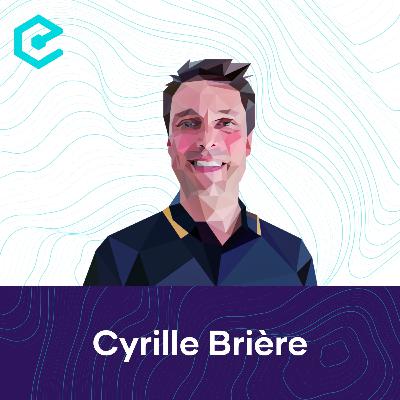
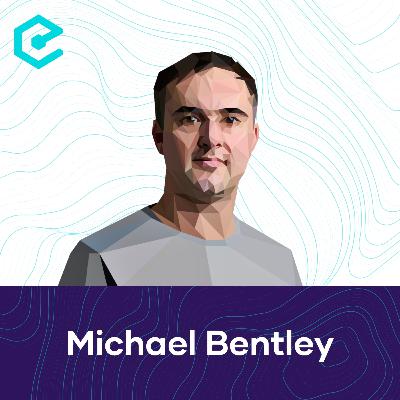
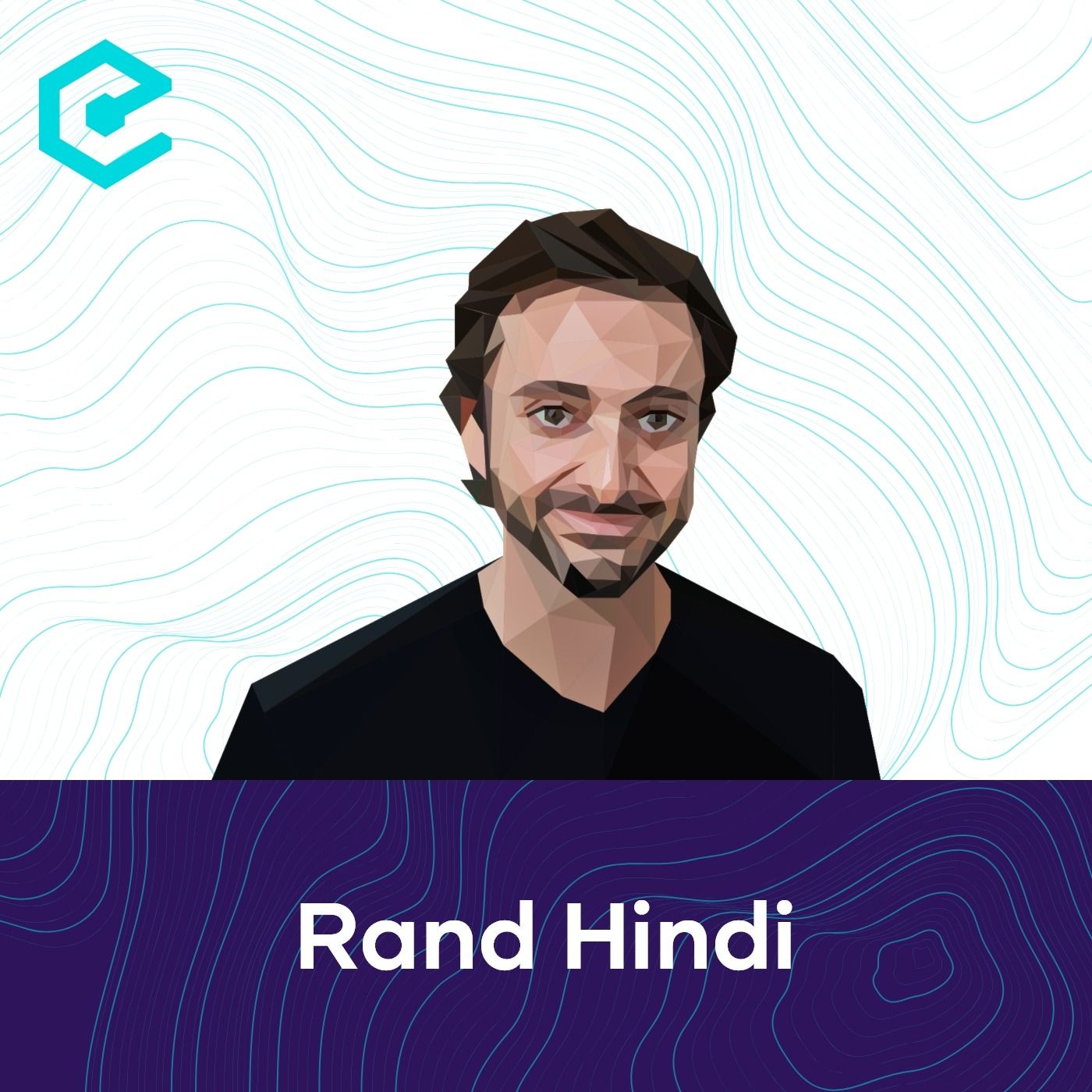
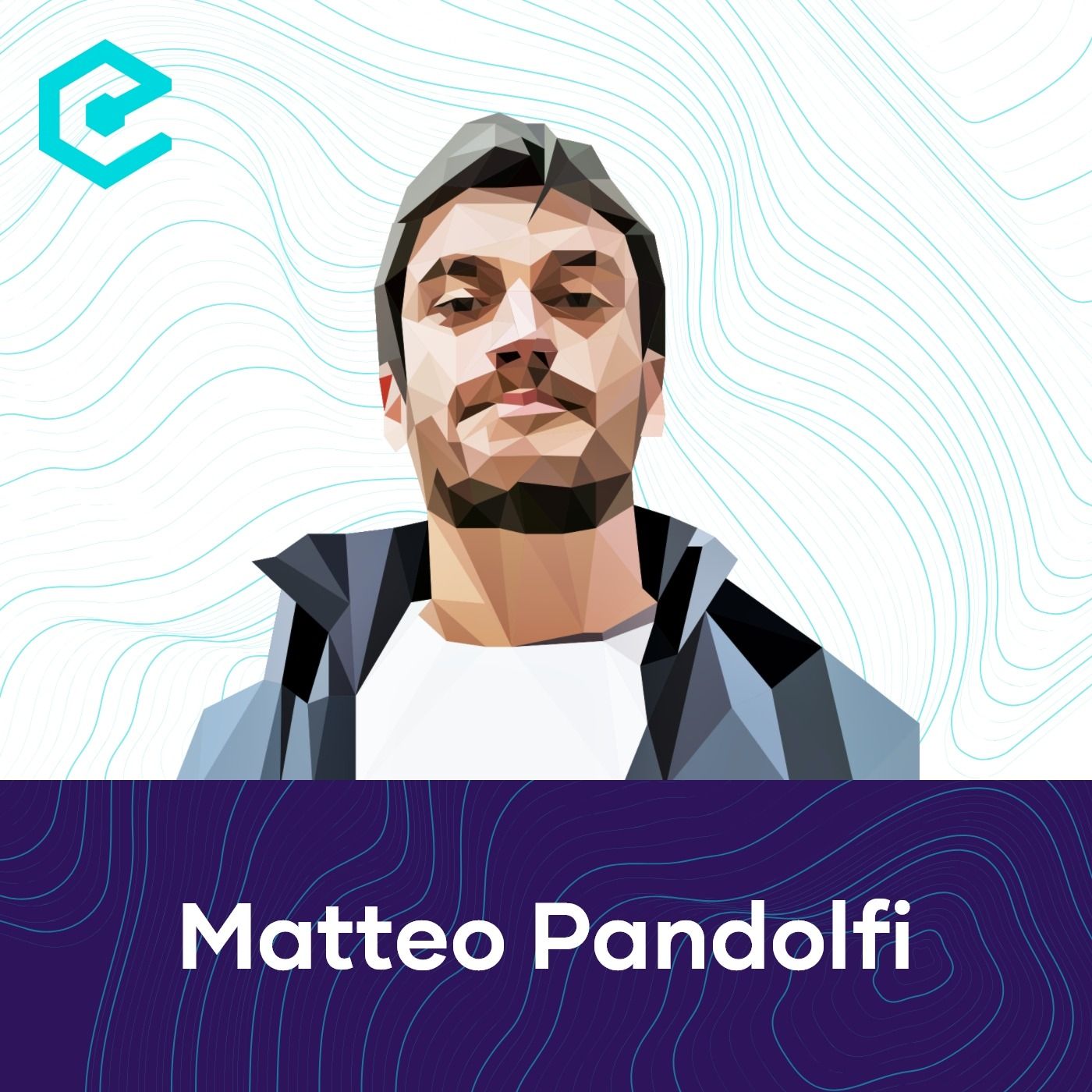

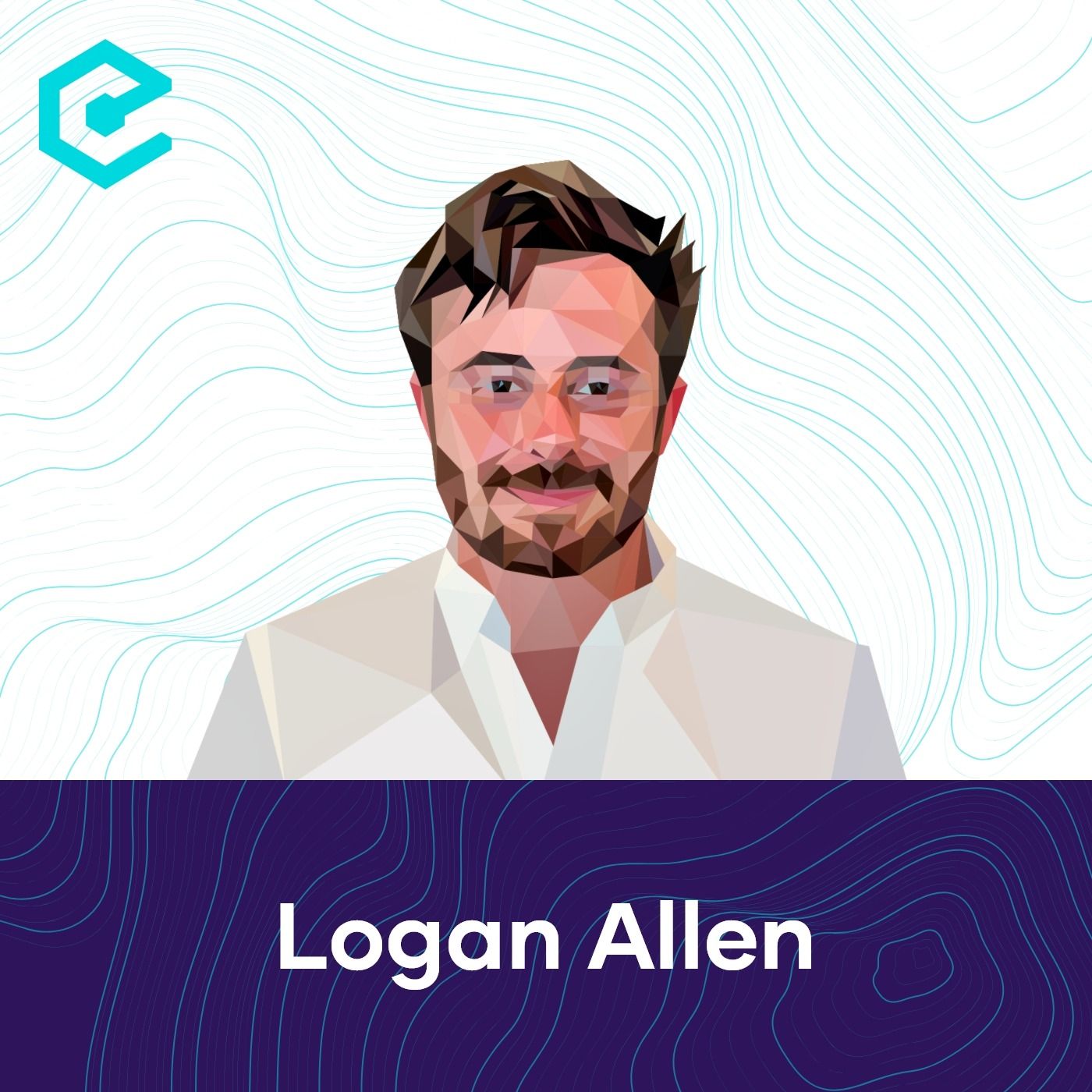
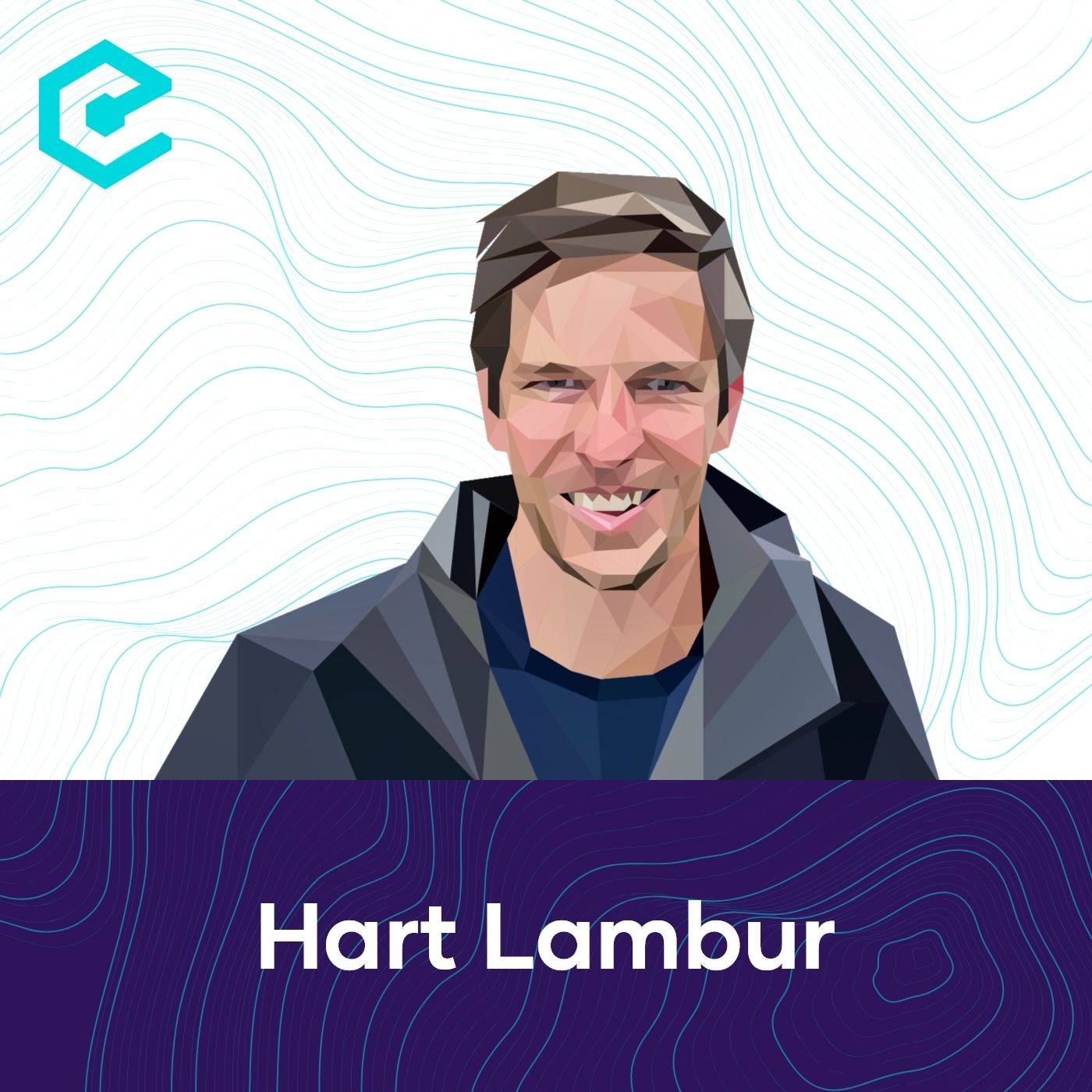



I can finally tell you on which platform I created my cryptocurrency wallet. I have been testing https://nonbank.io/ for several months and now I am convinced of the reliability and advantages of this platform. The platform is intuitive even for those who are just starting their journey in cryptocurrencies. Registration took a couple of minutes, and now I calmly manage my assets without worrying about security. I used to use third-party wallets, but everything is much more convenient here. This is an ideal option for those who appreciate simplicity and reliability. You can learn more about the advantages directly on the page.
Cleanspark, a sustainability-focused bitcoin mining company, has announced it will kick-start a 20 MW initiative in its Norcross bitcoin mining facility where miners will be cooled via immersion. The company will host more than 5,900 miners in this facility, which will be submerged into tanks of a biodegradable liquid. Cleanspark states this will help them save energy and increase the hashrate obtained from the miners. https://bitcoin-tidings.com/bitcoin-mining-company-cleanspark-to-kick-start-20-mw-immersion-cooling-initiative
Cleanspark, a sustainability-focused https://bitcoin-tidings.com/bitcoin-mining-company-cleanspark-to-kick-start-20-mw-immersion-cooling-initiativebitcoin mining company, has announced it will kick-start a 20 MW initiative in its Norcross bitcoin mining facility where miners will be cooled via immersion. The company will host more than 5,900 miners in this facility, which will be submerged into tanks of a biodegradable liquid. Cleanspark states this will help them save energy and increase the hashrate obtained from the miners.
While the blockchains themselves are secure, the applications running on the blockchain may not be. These applications interact with the blockchain through smart contracts, but just like any other software, bugs in the code can lead to security vulnerabilities. For this, we need to involve the auditors who conduct security audits on the smart contract. Smart Contract Audit Services helps you find hidden exploits and eventually reduce the risk and provide you an extra layer of security. Bug-free code is nice to have in other types of software, in blockchain applications, it is essential.
18'47" into the episode and the real interview has not started...I understand ads keep the show going, but a disrespect of listeners' time to this egregious level, in my opinion, is not a sustainable strategy going forward.
Was ein Ehrenmann!
Libra shouldnt be regulated, and neither should anything else
Fuck your regulations, crypto exists to undermine them. Dont tread on me.
8
See you guys at SF blockchain week.
Great eye opening podcast with Vinay!
Good job guys. Keep going